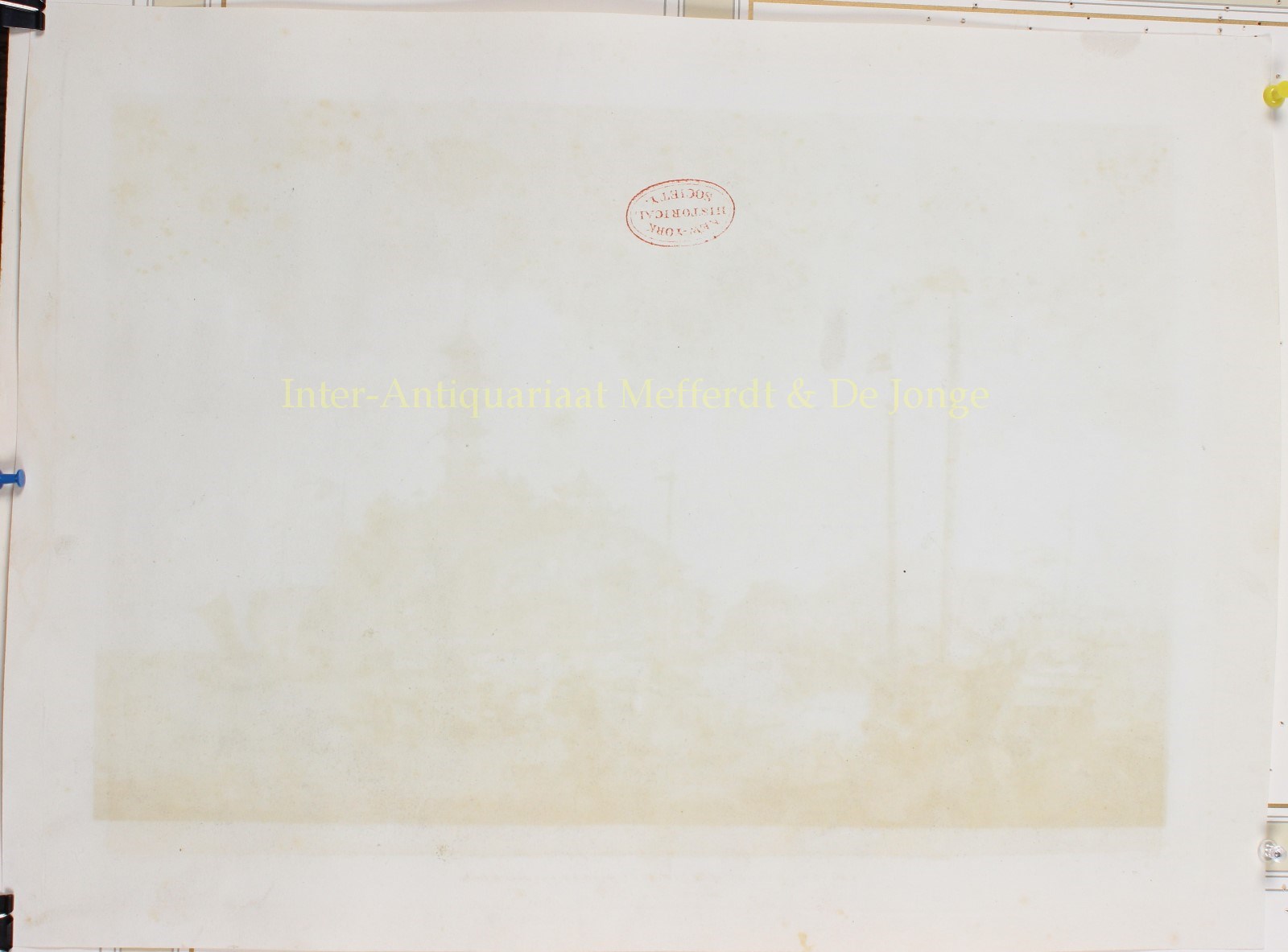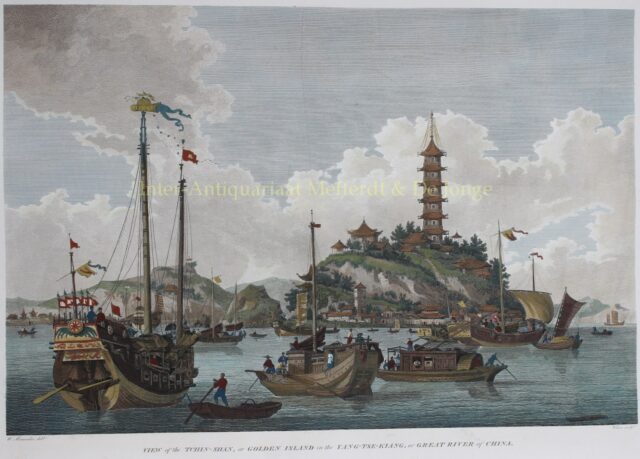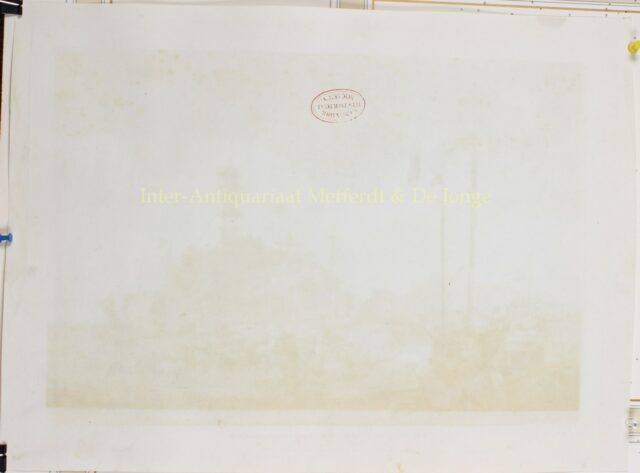China, Yangtze rivier – naar William Alexander, 1796
“View of the Tchin-Shan, or Golden Island in the Yang-Tse-Kiang, or Great River of China.” Kopergravure vervaardigd door William Wilson…
Lees verder
“View of the Tchin-Shan, or Golden Island in the Yang-Tse-Kiang, or Great River of China.” Kopergravure vervaardigd door William Wilson naar het ontwerp van William Alexander (1767-1816) uit het “Authentic account of an embassy from the King of Great Britain to the Emperor of China; including cursory observations made, and information obtained, in travelling through that ancient empire” van de hand van Sir George Leonard Staunton uitgegeven te Londen 12 april 1796. Later met de hand gekleurd. Afm. (voorstelling): ca. 30,4 x 45,6. cm.
Graaf George Macartney (1737-1806), kwam in 1792 als eerste Britse gezant naar China. De doel van de reis bestond uit het openen van nieuwe havens voor Britse handel in China, het opzetten van een permanente ambassade in Beijing en de versoepeling van handelsbeperkingen voor Britse handelaren in Kanton. De delegatie van Macartney had een ontmoeting met keizer Qianlong, die alle Britse verzoeken afwees. Hoewel de missie dus officieel geen succes was, waren de uitgebreide culturele, politieke en geografische observaties, een openbaring voor Europa.
De reis werd opgetekend door Macartney’s secretaris Sir George Leonard Staunton. De daarbij gemaakte gravures toonden China zoals nog vrijwel geen enkele Europeaan had gezien en maken aanschouwelijk hoe ver de Chinese beschaving was en tijde van de Qing-dynastie op technisch, artistiek en organisatorisch vlak.
Staunton beschrijft de voorstelling op de Yangtze als volgt: “In crossing the river the attention was particularly attracted by an island situated in the middle of the river, called Chin-shan, or the golden mountain, which rose almost perpendicularly out of the river, and is interspersed with gardens and pleasure-houses. Art and nature seemed to have combined to give to this spot the appearance of enchantment. It belonged to the Emperor, who had built upon it a large and handsome palace, and on the highest eminence several temples and pagodas. The island also contained a large monastery of priests, by whom it is chiefly inhabited. A vast variety of vessels were moving on this large river. On the left hand side of the print is an accurate delineation of a Chinese ship of war.”
Prijs: VERKOCHT




